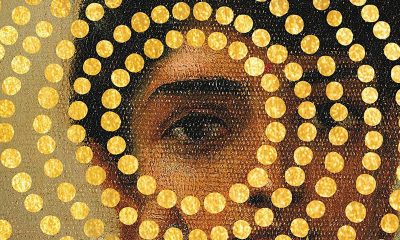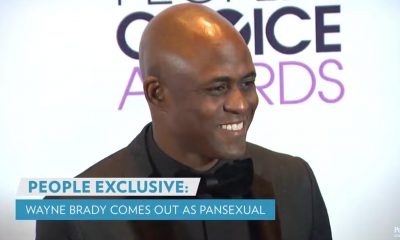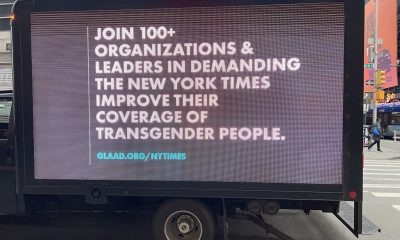Books
YEAR IN REVIEW 2016: Books
Haunting Dust Bowl novel by Annie Bell among year’s best books
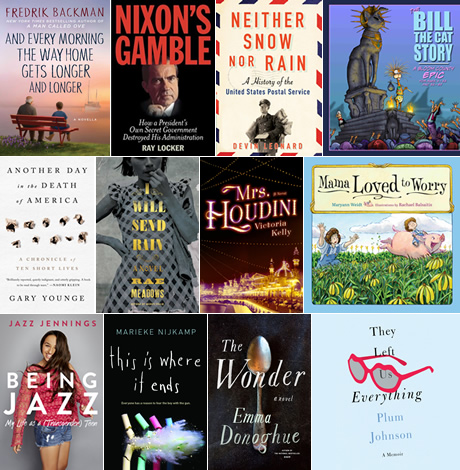
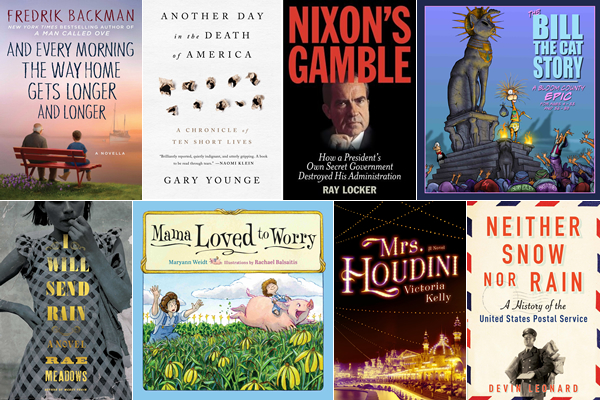 I’m not sure why, but I couldn’t stop touching “I Will Send Rain” by Rae Meadows when I first got it. The cover pulled at me, but the story? Oh my, it’s the tale of a family of four during the Dust Bowl years. The mother, Annie Bell, is trying desperately to hold her family together while her daughter dreams a dangerous dream, her son is mute and her husband slowly goes mad. There’s a surprise in here, a fifth main character, and that’s the dust. Do. Not. Miss. This. Book.
I’m not sure why, but I couldn’t stop touching “I Will Send Rain” by Rae Meadows when I first got it. The cover pulled at me, but the story? Oh my, it’s the tale of a family of four during the Dust Bowl years. The mother, Annie Bell, is trying desperately to hold her family together while her daughter dreams a dangerous dream, her son is mute and her husband slowly goes mad. There’s a surprise in here, a fifth main character, and that’s the dust. Do. Not. Miss. This. Book.
Not normally a big fan of fictionalized biographies, “Mrs. Houdini” by Victoria Kelly nonetheless captivated me with its magic. It’s a tale of love and illusion, believing, trust, and it includes a gauzy ending that might seem implausible but who knows? Hint: if you can bear it, save your gift card. This book comes out in paperback in March.
Generally speaking, I’ll read anything by out author Emma Donoghue. She has a way of turning a tiny, true event into a novel that sticks in your head and “The Wonder” is no exception. It’s the story of a very confident, almost haughty nurse who served with Florence Nightingale and seems to think that stint confers some sort of specialness. When she’s hired to watch a child who claims not to eat or drink, the nurse thinks the girl is a scammer, but, of course, there’s so much more to the story and an ending that’s so perfect, it’s stunning. Write this title down. It’s another book you can’t miss.
A vision of the apocalypse is at root in “The Fireman” by Joe Hill. It’s a novel about a virus that’s infected the world, and if you catch it, you burn. Poof, up in flames, and it’s pitting neighbor against neighbor and husband against wife. There’s a surprising romance in this book, thrills, a chase, humor and horror, and here’s a hint: there are shades of Hill’s father in here. Guess who?
For my fifth pick, I debated: “Britt-Marie Was Here” or “And Every Morning the Way Home Gets Longer and Longer,” both by Fredrik Backman? I finally decided on the latter, the story of life and loss, forgetting and trying hard not to. But here’s the thing to know: the first go-around won’t make much sense. Turn around and read it again — it’s really short, so no problem — and bring tissues that time. It’s truly a lovely book.
Hint: “Britt-Marie” is a close, very close second-pick.
NONFICTION
As I was looking over the list of things I read, I was surprised to remember how much I enjoyed “Neither Snow nor Rain” by Devin Leonard. Overall, this book is about the U.S. Postal Service and its history. The thing that makes this book so much fun, though, is that Leonard also includes so many side stories that it becomes more of a general history that’s light and fun. Fans of Bill Bryson, take note and find this book.
Another something that’s informative and a little on the light side is “Playing Dead” by Elizabeth Greenwood. I mean, how many times a week does the average person wish they could chuck it all and disappear somewhere? Greenwood looks into that: how it’s done, what it’s like and the impacts it has on loved ones. You might change your mind. Or you might want to disappear even more. Either way, this is a can’t miss.
As a Baby Boomer, “They Left Us Everything” by Plum Johnson particularly resonated with me, which is why it really has to be on this list. Johnson’s parents were both elderly and had lived in their oversized house for decades. When they died in relatively fast succesion, Johnson and her brothers were tasked with cleaning up, but not just the house. They also had memories to examine and scrub. This is a book for daughters, particularly, but also for anyone who’s facing the downsizing of a home or end-of-life caretaking.
In a political year, you might guess that an abundance of political books might be published, and you’d be right. My pick for the best in that category is “Nixon’s Gamble” by Ray Locker, who takes a brief look at Nixon’s early career before digging into the moves that the President made, starting on the day of his inauguration. Even if you think you know what happened nearly half a century ago, you don’t. For history lovers of any age or place, this is an eye-opener.
I don’t think I would have liked “Another Day in the Death of America” by Gary Younge quite as much if it had been laser-focused. Nope, Younge took one random day in recent years, and he writes about the 10 children who died of gunshot wounds in the U.S. on that day. It’s that randomness that’s so shocking, especially when you consider the statistic he cites: an average of seven children die by gun every day in America. The circumstances Younge found make this book even more impactful.
CHILDREN’S/YOUNG ADULT BOOKS
Putting “The Bill the Cat Story” by Berkley Breathed on the kids best of list might be cheating a little because this book is only partly something for kids. True, the kiddoes will love the illustrations and older children might laugh at the storyline, but this book is every bit for adults as it is for the younger set. Grown-ups will love the message inside this book; fans of Breathed’s “Bloom County” will appreciate knowing about Binkley’s first days with Bill, and the insider peek at Opus’ home. I don’t say this lightly: it’s a book for the whole family.
I’m not sure if I was ready for its light breeziness, but “Being Jazz” by Jazz Jennings was the right book at the right time when I read it last summer. You might have seen Jennings on the news; as a transgender teen, she’s become somewhat of a spokesperson for trans rights and acceptance. Her book is gossipy, bubbly and truthful — she proactively answers questions that teens want to know, without embarrassment. Hint: this is a great book for adults, too.
Another book that caught me by surprise (because I loved it so much) was “Mama Loved to Worry” by Maryann Weidt, illustrated by Rachael Balsaitis. In the same vein as the Pecos Bill, Slue-Foot Sue and Paul Bunyan stories you loved as a kid, this is a book set on a farm, with a Mama whose tasks grow larger in both action and in fable. The pictures are as much fun as the story, and you’ll love it just as much as does your child, especially when it’s read aloud.
There’s a lot of cleverness inside “The Night Parade” by Kathryn Tanquary — enough to keep a lover of darkness up all night. It’s the story of a Japanese-American girl who tries to fit in with the “in” crowd by disrespecting her ancestors, and yes, her actions have scary repercussions. Older middle schoolers not prone to nightmares will love this, as will younger young adults who are just stepping into this genre. Hint: save your gift cards. This book comes out in paperback in January.
And finally, “This is Where It Ends” by Marieke Nijkamp is a chillingly unexpected tale of a school shooting and heroism, with realism and timeliness that will shock you. That’s not counting the story itself, told in minute-by-minute increments that will make you forget you’re not reading a real account of a tragedy. Again, this isn’t just a YA book. It’s something adults should also want to read.
Books
New book offers observations on race, beauty, love
‘How to Live Free in a Dangerous World’ is a journey of discovery

‘How to Live Free in a Dangerous World: A Decolonial Memoir’
By Shayla Lawson
c.2024, Tiny Reparations Books
$29/320 pages
Do you really need three pairs of shoes?
The answer is probably yes: you can’t dance in hikers, you can’t shop in stilettos, you can’t hike in clogs. So what else do you overpack on this long-awaited trip? Extra shorts, extra tees, you can’t have enough things to wear. And in the new book “How to Live Free in a Dangerous World” by Shayla Lawson, you’ll need to bring your curiosity.

Minneapolis has always been one of their favorite cities, perhaps because Shayla Lawson was at one of Prince’s first concerts. They weren’t born yet; they were there in their mother’s womb and it was the first of many concerts.
In all their travels, Lawson has noticed that “being a Black American” has its benefits. People in other countries seem to hold Black Americans in higher esteem than do people in America. Still, there’s racism – for instance, their husband’s family celebrates Christmas in blackface.
Yes, Lawson was married to a Dutch man they met in Harlem. “Not Haarlem,” Lawson is quick to point out, and after the wedding, they became a housewife, learned the language of their husband, and fell in love with his grandmother. Alas, he cheated on them and the marriage didn’t last. He gave them a dog, which loved them more than the man ever did.
They’ve been to Spain, and saw a tagline in which a dark-skinned Earth Mother was created. Said Lawson, “I find it ironic, to be ordained a deity when it’s been a … journey to be treated like a person.”
They’ve fallen in love with “middle-American drag: it’s the glitteriest because our mothers are the prettiest.” They changed their pronouns after a struggle “to define my identity,” pointing out that in many languages, pronouns are “genderless.” They looked upon Frida Kahlo in Mexico, and thought about their own disability. And they wish you a good trip, wherever you’re going.
“No matter where you are,” says Lawson, “may you always be certain who you are. And when you are, get everything you deserve.”
Crack open the front cover of “How to Live Free in a Dangerous World” and you might wonder what the heck you just got yourself into. The first chapter is artsy, painted with watercolors, and difficult to peg. Stick around, though. It gets better.
Past that opening, author Shayna Lawson takes readers on a not-so-little trip, both world-wide and with observant eyes – although it seems, at times, that the former is secondary to that which Lawson sees. Readers won’t mind that so much; the observations on race, beauty, love, the attitudes of others toward America, and finding one’s best life are really what takes the wheel in this memoir anyhow. Reading this book, therefore, is not so much a vacation as it is a journey of discovery and joy.
Just be willing to keep reading, that’s all you need to know to get the most out of this book. Stick around and “How to Live Free in a Dangerous World” is what to pack.
The Blade may receive commissions from qualifying purchases made via this post.
Books
Story of paralysis and survival features queer characters
‘Unswerving: A Novel’ opens your eyes and makes you think

‘Unswerving: A Novel’
By Barbara Ridley
c.2024, University of Wisconsin Press
$19.95 / 227 pages
It happened in a heartbeat.
A split-second, a half a breath, that’s all it took. It was so quick, so sharp-edged that you can almost draw a line between before and after, between then and now. Will anything ever be the same again? Perhaps, but maybe not. As in the new book “Unswerving” by Barbara Ridley, things change, and so might you.

She could remember lines, hypnotizing yellow ones spaced on a road, and her partner, Les, asleep in the seat beside her. It was all so hazy. Everything Tave Greenwich could recall before she woke up in a hospital bed felt like a dream.
It was as though she’d lost a month of her life.
“Life,” if you even wanted to call it that, which she didn’t. Tave’s hands resembled claws bent at the wrist. Before the accident, she was a talented softball catcher but now she could barely get her arms to raise above her shoulders. She could hear her stomach gurgle, but she couldn’t feel it. Paralyzed from the chest down, Tave had to have help with even the most basic care.
She was told that she could learn some skills again, if she worked hard. She was told that she’d leave rehab some day soon. What nobody told her was how Les, Leslie, her partner, girlfriend, love, was doing after the accident.
Physical therapist Beth Farringdon was reminded time and again not to get over-involved with her patients, but she saw something in Tave that she couldn’t ignore. Beth was on the board of directors of a group that sponsored sporting events for disabled athletes; she knew people who could serve as role models for Tave, and she knew that all this could ease Tave’s adjustment into her new life. It was probably not entirely in her job description, but Beth couldn’t stop thinking of ways to help Tave who, at 23, was practically a baby.
She could, for instance, take Tave on outings or help find Les – even though it made Beth’s own girlfriend, Katy, jealous.
So, here’s a little something to know before you start reading “Unswerving”: author Barbara Ridley is a former nurse-practitioner who used to care for patients with spinal cord injuries. That should give readers a comfortable sense of satisfaction, knowing that her experiences give this novel an authenticity that feels right and rings true, no faking.
But that’s not the only appeal of this book: while there are a few minor things that might have readers shaking their heads (HIPAA, anyone?), Ridley’s characters are mostly lifelike and mostly likable. Even the nasties are well done and the mysterious character that’s there-not-there boosts the appeal. Put everyone together, twist a little bit to the left, give them some plotlines that can’t ruined by early guessing, and you’ve got a quick-read novel that you can enjoy and feel good about sharing.
And share you will because this is a book that may also open a few eyes and make readers think. Start “Unswerving” and you’ll (heart) it.
The Blade may receive commissions from qualifying purchases made via this post.
Books
Examining importance of queer places in history of arts and culture
‘Nothing Ever Just Disappears’ shines with grace and lyrical prose

‘Nothing Ever Just Disappears: Seven Hidden Queer Histories’
By Diarmuid Hester
c.2024, Pegasus Books
$29.95/358 pages
Go to your spot.
Where that is comes to mind immediately: a palatial home with soaring windows, or a humble cabin in a glen, a ramshackle treehouse, a window seat, a coffeehouse table, or just a bed with a special blanket. It’s the place where your mind unspools and creativity surges, where you relax, process, and think. It’s the spot where, as in the new book “Nothing Ever Just Disappears” by Diarmuid Hester, you belong.

Clinging “to a spit of land on the south-east coast of England” is Prospect Cottage, where artist and filmmaker Derek Jarman lived until he died of AIDS in 1994. It’s a simple four-room place, but it was important to him. Not long ago, Hester visited Prospect Cottage to “examine the importance of queer places in the history of arts and culture.”
So many “queer spaces” are disappearing. Still, we can talk about those that aren’t.
In his classic book, “Maurice,” writer E.M. Forster imagined the lives of two men who loved one another but could never be together, and their romantic meeting near a second-floor window. The novel, when finished, “proved too radical even for Forster himself.” He didn’t “allow” its publication until after he was dead.
“Patriarchal power,” says Hester, largely controlled who was able to occupy certain spots in London at the turn of the last century. Still, “queer suffragettes” there managed to leave their mark: women like Vera Holme, chauffeur to suffragette leader Emmeline Pankhurst; writer Virginia Woolf; newspaperwoman Edith Craig, and others who “made enormous contributions to the cause.”
Josephine Baker grew up in poverty, learning to dance to keep warm, but she had Paris, the city that “made her into a star.” Artist and “transgender icon” Claude Cahun loved Jersey, the place where she worked to “show just how much gender is masquerade.” Writer James Baldwin felt most at home in a small town in France. B-filmmaker Jack Smith embraced New York – and vice versa. And on a personal journey, Hester mourns his friend, artist Kevin Killian, who lived and died in his beloved San Francisco.
Juxtaposing place and person, “Nothing Ever Just Disappears” features an interesting way of presenting the idea that both are intertwined deeper than it may seem at first glance. The point is made with grace and lyrical prose, in a storyteller’s manner that offers back story and history as author Diarmuid Hester bemoans the loss of “queer spaces.” This is really a lovely, meaningful book – though readers may argue the points made as they pass through the places included here. Landscapes change with history all the time; don’t modern “queer spaces” count?
That’s a fair question to ask, one that could bring these “hidden” histories full-circle: We often preserve important monuments from history. In memorializing the actions of the queer artists who’ve worked for the future, the places that inspired them are worth enshrining, too.
Reading this book may be the most relaxing, soothing thing you’ll do this month. Try “Nothing Ever Just Disappears” because it really hits the spot.
The Blade may receive commissions from qualifying purchases made via this post.

